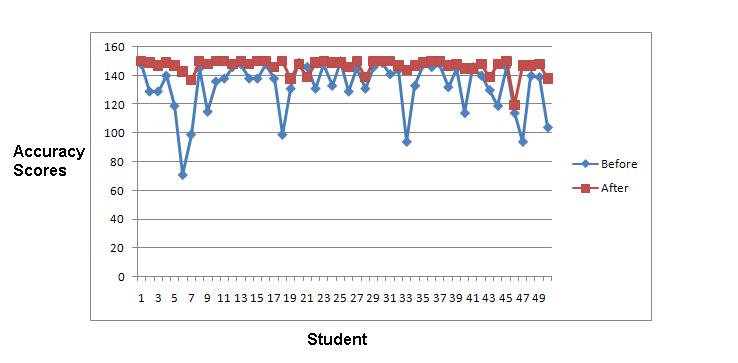Effect of Yoga on Concentration
An Empirical Study on Management Students
A Research Article on
"Effect of Yoga on Concentration"
An Empirical Study on Management Students
ABSTRACT:
One should keep looking for healthy ways to manage the memory in student life, and develop lifelong habits that will help them achieve success. Yoga has gained in popularity in recent years because of its perceived benefits in reducing stress and improving concentration. The research aims to identify the effect of yoga exercises on concentration of some management students. Researcher used the experimental group, using design for one group by the pre and post measurement. Problems with concentration may be linked to various issues. Concentration while learning is a major problem in helping students with disabilities attains academic goals. The research would suggest the role of yoga in managing concentration of students. The further scope of the study is understanding role of yoga in managing stress in these students.
KEY WORDS:
Concentration, Exercise, Management, Memory, Yoga
INTRODUCTION:
Human body, which is in some ways like a machine, does not have facility to contact the manufacturer in case of troubles. It is often treated in ways that are harmful to the proper functioning of their structure. It is imperative and advisable to prevent human body from diseases rather than curing it at a later stage.
Yoga is an ancient science of physical, mental and spiritual development. Yoga has the ideas and practice of the operating manuals for the successful functioning of the human structure. Yoga states that if humans observe certain rules, they can easily live an active and healthy life even in old age. A path to enlightenment that winds back 5,000 years in its native India, yoga has regained its popularity in recent years. Yoga has been gaining immense popularity due to the short-term as well as long-term benefits that it extends; particularly inspired by the Spiritual Element that yoga provides by the increased Fitness and Flexibility.
One should keep looking for healthy ways to manage the memory in college life, and develop lifelong habits that will help you achieve success. Several researchers claim highly beneficial results from Yoga practices; ranging from intense to moderate to relaxed asana sequences, plus pranayama and meditation in managing concentration. Some teachers recommend a simple, varied asana practice with specific pranayama techniques.
A student’s ability to learn influences his grades, the quality of his education, and his choices for career. Problems with concentration may be linked to various issues. Concentration while learning is a major problem in helping students with disabilities attains academic goals. It can take a long time for some people to learn how to properly concentrate in a given environment. The significance of this study is to understand the affect of yoga techniques on management students in improving concentration. Developing healthy stress relieving habits and concentration techniques would really pay off in the long run.
LITERATURE REVIEW:
Yoga has gained in popularity in recent years because of its perceived benefits in reducing stress and improving concentration. Children participating in yoga training regularly showed improvement in emotional and behavioral problems (Jenson and Kenny, 2004). The research on Yoga and mental and physical health is not as sophisticated nor as well-controlled as the studies that some researchers have reviewed. A 1982 review of the studies on Yoga states: “The review of the reports on yoga therapy shows that not much of these studies have been done under real scientific discipline”.
The specific aspects of yoga practice that have been reported as most beneficial vary between investigators as well as between yoga teachers. Some scholars have found evidence of early yogic practice in the archeological artifacts from the Indus valley civilization in sindh, which developed from about 2500 BC. In survey it is found that Lord Pasupati seated in yoga posture, make it by far “the earliest representation of a yogin” (1969: 355). There have been several popular English-language yoga manuals available from 1800s to about 1935. De Michelis (2004) has proposed that the “Modern Yoga” begins with Vivekananda’s Raja Yoga of 1896, and while there are a few exceptions- such as the Theosophical Society- sponsored works of M.N. Dvivedi (1885, 1890) and Ram Prasad (1890)- it is largely true that the practice oriented Anglophone yoga manuals begin to emerge as a genre only after this period.
Woolery et al (2004) found that after 10 one hour Iyengar yoga classes over a five week period that there was a significant decrease in Beck Disability Index scores. Shapiro et al (2007) in a study of people with major unipolar depression found that after eight weeks of three sessions/week, 65% were diagnosed as in complete remission. Michalson (2005) found that after three months of two‐ 90 minute/week Iyengar classes, there was a significant reduction in depression and improvements in reported perceived stress, well‐being, vigor, and fatigue.
Those components studied and showing some benefit are yogic breathing (Brown et al 1993, Janakiramaiah 2000), savasana/corpse pose (Khumar 1998), and backbends and inversions (Michalson 2005 et al, Woolery et al 2004). Other techniques suggested as important, though not scientifically investigated include specific breathing techniques such as ujjayi breathing, gentle contract relax during savasana, postures including legs‐up‐the‐wall, bow pose, maha mudra, plow pose, shoulder stand, vajrasana, and sun salutations, and yoga meditation and yoga nidra.
Grover et al (1987) investigated whether the benefits of yoga were related to a person’s initial attitude towards yoga. Penedo & Dahn 2005 performed a review of the literature regarding exercise and well‐being. Foxx (2000) reported similar findings of improvements in psychological well‐being. Yoga breathing may be useful for restoring a sense of control when an individual is confronted by an anxiety-inducing trigger (Brown and Gerbarg, 2005). Yoga has the capacity for lowering excitability and increasing concentration and self control (Sharma, Yadava, & Hooda, 2005).
METHODOLOGY:
Evaluation of concentration of these students is done through Speed and Accuracy Test tool (S.D. Kapoor, 1990). The pre and post measurement of scores of the test recorded with the time take by each student. The post data is recorded after a period of two months of regular attendance of these students performing Kapaal-bharti, Alom-vilom, Pranayaam and ‘Om’ meditation for 45 minutes daily.
Research Design:
The research consists of a longitudinal study with an experimental design. A research study is conducted on 50 PGDM Students of Disha School of Management. Let us take two null hypotheses that-
H01- Meditation does not improve the accuracy of the students.
H02- Meditation does not improve the speed of the students.
The speed and accuracy measurements on the pre and post tests are recorded in table 1. As the sample size is greater than 30, statistical analysis is done using z-test for the data obtained from this study. The outcome of the research after measuring speed and accuracy level pre and post practice of yogic exercises on the subjects is presented in the form of graph:

Applying z-test to the score (Accuracy):
t=d2  n/s
n/s  d= 698 N=50 d2 =
d= 698 N=50 d2 =  d/N= 698/50= 13.96
d/N= 698/50= 13.96  d2=21964
d2=21964
s=  d2-N (d2)/ N-1= 21964-50(13.96)2/50-1= 15.79
d2-N (d2)/ N-1= 21964-50(13.96)2/50-1= 15.79
t= 6.25
At 5% significant level, t=1.684 in the table.
The observed value of t is 6.25 which fall in the rejection region. Hence, the null hypothesis is rejected. Thus, the meditation has improved the accuracy of the students

Applying t-test to the time taken (Speed):
t=d2 n/s d= -304.1 d2 =
n/s d= -304.1 d2 = d/N= -304.1/50= -6.082
d/N= -304.1/50= -6.082  d2=2809.25
d2=2809.25
s= d2-N (d2)/ N-1= 2809.25-50(-6.082)2/50-1= 4.426
t=- 6.082X7.07/4.426= 9.717
At 5% significant level, t=1.684 in the table.
The observed value of t is 9.717 which again fall in the rejection region. Hence, the null hypothesis is rejected. Thus, the meditation has improved the speed of the students.
CONCLUSION:
It is imperative from the above tables and t-test that there have been increase in the Speed and Accuracy (Concentration) from pre to post results of management students, after practicing Kapaal-bharti, Alom-vilom, Pranayaam and meditation on ‘AUM’ for 2 months regularly. Yoga thus, may act as an education that bridges the gap between the ordinary and brilliant student. It can be considered to be strengthening the power of mind. By improving accuracy and speed, one is able to absorb and process information accurately and quickly. Further, improving concentration is associated with improving long-term memory (Gary Groth-Matnat, 2009). This may be the reason; it’s becoming an integral part of life and gaining importance in the present education system as well.
REFERENCES:
- Buitelaar, Cornelis & Asherson (2011), ADHD in Adults: Characterization, Diagnosis, and Treatment, Cambridge University Press, Illustrated Edition, pg. 289
- Groth-Marnat Gary (2009), Handbook of Psychological Assessment, 5th Edition, John Wiley and Sons, 2009, pg.164
- Grover P, Varma V, Verma S, Pershad D. (1987) Relationship between the patient’s attitude towards yoga and the treatment outcome, Indian J Psychiatry 29(3), pp. 253-258
- Kimberlee Bethany Bonura (2007), The impact of yoga on psychological health in older adults, ProQuest, pg. 24
- Michalsen A, Grossman P, Acil A, Langhorst J, Ludtke R, Esch T, Stefano G, Dobos G (2005). Rapid stress reduction and anxiolysis among depressed women as a consequence of three month intensive yoga program Med Sci Monit 11(12), pp. 555-561
- Pestonjee D.M. (1997), Third handbook of psychological and social instruments, Volume 1, Concept Publishing Company, pg. 8
- Pilkington K, Kirkwood J, Rampes H, Richardson J. (2005), Yoga for depression: the research evidence, J Affective Distributors 89, pp.13-24
- Ravi S. Samuel (2011), A comprehensive study of education, PHI Learning, Eastern Economy Edition, pg. 272
- Singleton Mark (2010), Yoga body: the origins of modern posture practice, Illustrated Edn, Oxford University Press, pg. 33
- Udupa K.N. (1985), Stress and Its Management by Yoga, Motilal Banarsidass, Delhi
- Vamadevappa H.V. (2006), Underachievement in Biology, Discovery Publishing House, pg. 91

